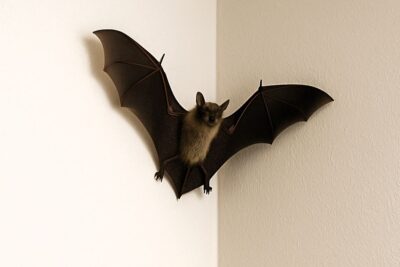 A bat flying around your living room might feel like a scene from a horror movie, but there’s no need to panic. Bats are surprisingly common intruders in residential homes, especially during the warmer months. They usually don’t mean any harm they’re just lost or looking for shelter.
A bat flying around your living room might feel like a scene from a horror movie, but there’s no need to panic. Bats are surprisingly common intruders in residential homes, especially during the warmer months. They usually don’t mean any harm they’re just lost or looking for shelter.
At WQA.info – World-Wide Q&A, we’re here to help you handle situations like this calmly, safely, and smartly.
Step-by-Step Guide: What to Do Immediately
1. Stay Calm
Don’t scream, swat, or try to hit the bat. Sudden movements can scare it and cause it to fly erratically.
2. Isolate the Bat
Close interior doors and confine the bat to one room. Open all windows and exterior doors in that room to give it a clear exit path.
3. Turn Off the Lights
Dim the room and stay quiet. Bats use echolocation and will usually find their way out in low-light settings.
4. Wait It Out
In many cases, the bat will leave on its own within a few minutes. Remain outside the room while it finds its way.
5. If the Bat Doesn’t Leave
Put on thick gloves and long sleeves. Use a small container or net to gently trap the bat against a wall. Slide a piece of cardboard under it and release the bat outside.
Important Safety Notes
Check for Contact
If the bat landed on anyone or touched them while sleeping, assume potential exposure to rabies even if there’s no bite mark. Contact local health authorities immediately.
Don’t Use Poison or Insecticides
Bats are protected in many regions. Using chemicals could be illegal and harmful to your home environment.
Why Do Bats Enter Homes?
Bats enter buildings through:
- Open windows or doors
- Unscreened vents or chimneys
- Cracks in roofing or siding
They often seek:
- Shelter during storms
- Cool, dark spaces to rest
- Entry to attics or wall cavities for roosting
How to Prevent Bats from Coming Back
1. Seal Entry Points
Inspect your home for holes or gaps, especially near the roofline, chimney, vents, or attic. Seal them with caulk or mesh.
2. Install Window Screens and Chimney Caps
Keep these areas secure to block accidental entry.
3. Use Bat Deterrents
Ultrasonic bat repellents or bright motion-activated lights can help discourage repeat visits.
4. Consider a Bat House
If bats are common in your area, a bat house in your yard can offer them an alternative roosting spot.
When to Call a Professional
Call animal control or a licensed wildlife removal expert if:
- The bat won’t leave or hides in the house
- You suspect a bat colony in the attic
- There’s a potential rabies exposure
These pros can safely remove the bat and assess your home for further risk.
Bats might seem scary, but they’re vital pollinators and insect-eaters. That said, your safety and peace of mind matter. At Vero Q&A, we guide you through challenges like this with clarity and calm.
Handling a bat inside doesn’t need to be chaotic. With the right knowledge and approach, you’ll be back to normal in no time.
How do I get a bat colony out of my attic?
You’ll need a wildlife removal expert. DIY methods often fail and can violate local wildlife laws. Bats won’t attack humans. However, they can carry rabies. If you have any contact, seek medical advice immediately. In many places, bats are protected by law. Removing or harming them may be illegal. Rabid bats may act disoriented, fly in daylight, or lie on the ground. Any bat indoors should be treated as a potential rabies threat. That’s a myth. Bats use echolocation and are excellent at avoiding obstacles, including people. Openings in attics or vents, dark spaces, and nearby insect populations can all attract bats.